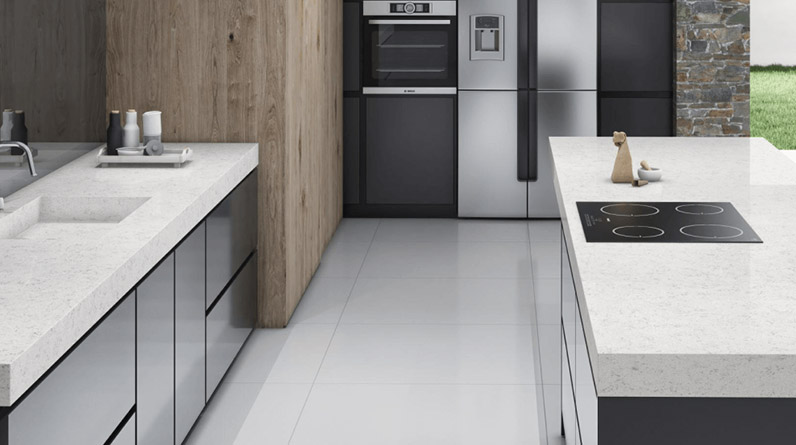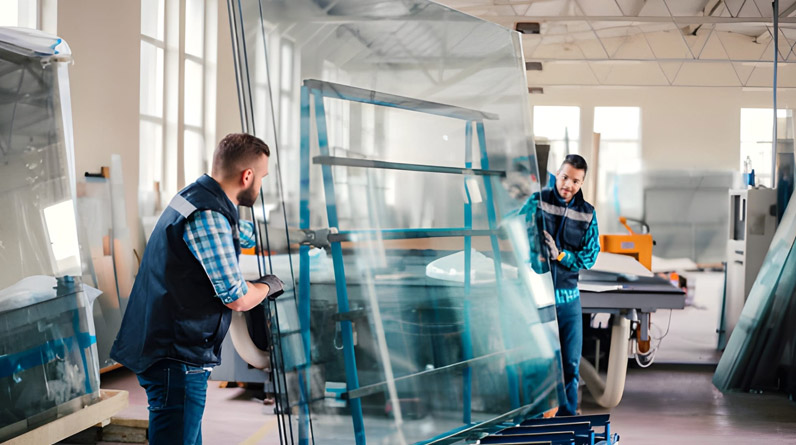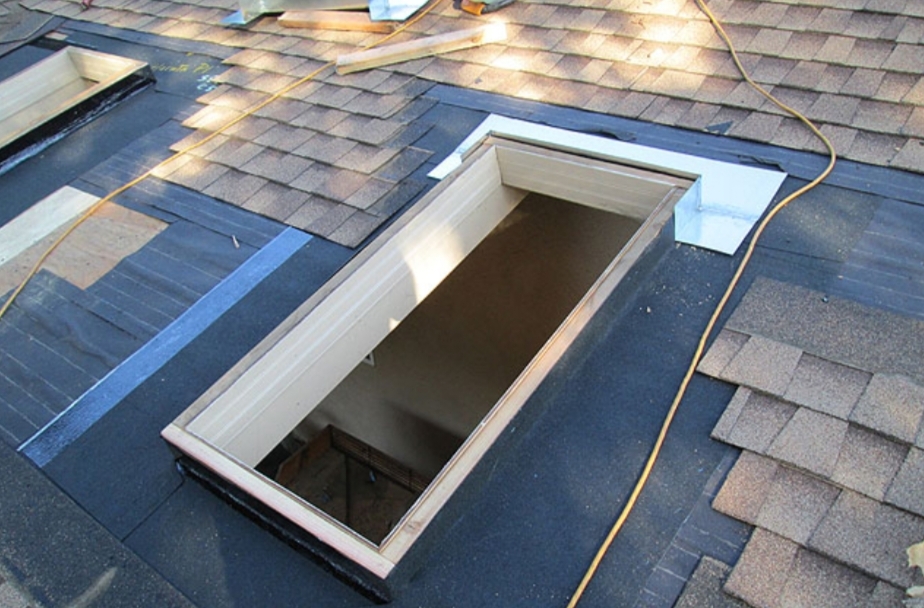Maintaining hygiene in kitchens and bathrooms can feel like a constant struggle, with daily spills, heat, and moisture creating the perfect conditions for germs. Traditional surfaces, such as quartz, marble, or natural stone, may look elegant, but they often require extra effort to stay clean and safe. Neotra Anti-Bacterial Surfaces provide a more innovative solution, actively resisting microbes, preventing stains, and reducing the need for frequent cleaning. With these engineered surfaces, everyday spaces become healthier, safer, and easier to maintain, all while maintaining style. Preparing meals on a countertop that stays germ-free or walking on a bathroom surface that remains fresh becomes effortless, making your home more comfortable and hygienic every day.
What are Anti-Bacterial Surfaces?
Anti-bacterial surfaces are engineered surfaces with built-in protection that helps reduce microbial activity upon contact. Instead of relying only on sprays or frequent scrubbing, the surface itself takes on part of the hygiene work. In kitchens and bathrooms, this continuous protection supports everyday cleanliness, from morning coffee prep to evening clean-ups. The protection is integrated into the surface, so it does not wash off and does not require special re-application.
Why do they matter in kitchens and bathrooms?
These areas are highly sensitive zones in homes because they are directly linked to our health. They face water, oil, steam, soap, and frequent temperature swings. Neotra Anti-Bacterial Surfaces help here in three ways. First, they are non-porous, so spills cannot seep in and feed microbes. Second, they are liquid-repellent, so messes wipe off before they become stains. Third, they support daily hygiene without the need for aggressive chemicals. For families with children or seniors, this is a practical way to keep important spaces fresh and safe.
Benefits of using Anti-bacterial surfaces:
- Continuous hygiene protection
Neotra surfaces are engineered with anti-bacterial properties, providing a built-in layer of defence against microbes between regular cleaning. - Non-porous and spill-resistant
The dense, liquid-repellent surface ensures spills like turmeric, oil, coffee, or soap remain on top, making them quick and easy to wipe away. - Scratch and abrasion resistance
With a tough, long-lasting finish, Neotra surfaces withstand everyday wear—whether from utensils, footwear, toys, or cleaning tools. - Heat and fire resistance
Designed to remain stable under hot cookware in the kitchen or warm styling tools in the vanity area, ensuring safety and reliability. - Chemical resistance
Neotra surfaces surfaces are compatible with everyday household cleaners, reducing the need for harsh cleaning products. - UV stability
Built to perform in sunlit kitchens, utility zones, and semi-outdoor spaces without fading or losing strength. - Certified assurance
Neotra surfaces is NSF-certified for food safety and IGBC-certified for sustainable, eco-friendly construction.
Design freedom without the upkeep
Neotra Anti-bacterial surfaces make it easy to keep things clean without compromising style. You’ll find them in soft whites, warm beiges, deep charcoals, and even stone-inspired patterns that are alternatives to natural stone. The large slabs have fewer joints, so your space feels smooth, modern, and much easier to maintain. With finishes like matte, silk-touch, or soft-sheen, they feel smooth to the touch and require low maintenance. Plus, you can carry the same look across countertops, backsplashes, vanities, shower ledges, and even window sills for one seamless design.
Real-life use cases
- Kitchen countertops and backsplashes: Daily cooking brings oil, spices, and splashes. A non-porous, liquid-repellent surface helps you wipe clean in seconds, supporting a food-safe prep area.
- Bathroom vanities and shower surrounds: Constant moisture invites mildew on many materials. With Anti-Bacterial Surfaces, water beads on top, making routine care easier and helping the space stay fresh.
- Dining bars and breakfast counters: These zones double as homework desks and snack spots. A scratch-resistant, easy-clean surface handles pens, plates, and laptops with equal ease.
- Utility rooms and pantries: Detergents, boxes, and tools can be rough on surfaces. A tough, chemical-tolerant finish keeps these work areas tidy and durable.
Residential and commercial advantages
For homes, Anti-Bacterial Surfaces simplify daily routines. Quick wipe-downs are enough to maintain a high level of cleanliness, so weekends are for family time, not heavy scrubbing. For businesses, especially those in the hospitality sector, such as cafes, clinics, salons, gyms, and hotels, maintaining high hygiene standards while projecting a polished image is crucial. In high-traffic settings, a hard, abrasion-resistant surface reduces visible wear and protects your investment over time.
Care and cleaning tips
- Use a soft cloth or mop with mild soap and water for daily cleaning.
- For sticky spots, rest a damp cloth on the area for a minute before wiping.
- Avoid abrasive pads; they are not necessary and may dull the finish’s texture.
- Choose pH-neutral cleaners for routine care; the surface’s built-in protection handles the rest.
- In wet rooms, ensure good ventilation to reduce condensation and keep joints dry.
How they compare to common materials
- Marble: Beautiful, but porous and prone to stains; often needs sealing. Anti-bacterial surfaces provide similar elegance with easier care and enhanced hygiene support.
- Granite: Strong, yet it can absorb liquids over time, encouraging patches or growth in damp areas. Non-porous surfaces avoid this.
- Quartz: Non-porous, but resin-based options can struggle with high heat and prolonged sunlight. A mineral with a high-heat-resistant surface offers broader stability.
- Vinyl/laminate: Budget-friendly but more susceptible to scratches and ageing, especially in hot or wet zones. A more rigid, UV-stable, liquid-repellent surface lasts longer and looks more premium.
Planning your upgrade
- Map your zones: Identify high-moisture and high-touch areas first.
- Pick your finish: Choose matte for low glare in bathrooms; select mid-tones in kitchens to disguise day-to-day dust.
- Match thickness to use: Standard thickness works for most interiors; consider heavier gauges for high-traffic areas such as retail, hospitality, or stair treads.
- Reduce joints: Larger slabs mean fewer grout lines and faster cleaning.
- Think long-term: Prioritise durability, hygiene, and maintenance savings over short-term bargains.
Conclusion
Clean spaces should stay that way without constant effort. Anti-bacterial surfaces make it possible by resisting stains, moisture, and everyday wear, while still offering timeless style in a range of elegant finishes. They keep kitchens and bathrooms fresh, practical, and beautiful for years to come. With Neotra Stones, you get surfaces designed to protect your family, save you time, and bring a touch of everyday luxury to your home. They also bring style, whether you prefer calm neutrals or bold stone-inspired designs, so you never have to compromise on beauty.



